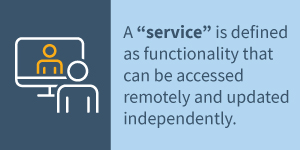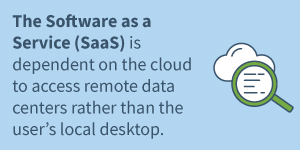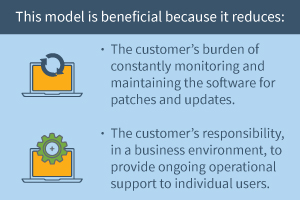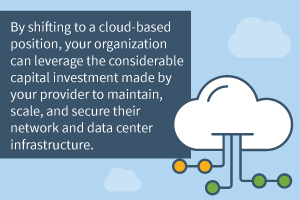
17 Feb Understanding Service Oriented Architecture
With information technology budgets shrinking, more leadership teams are tasked with reconsidering their organization’s overall computing infrastructure, along with the pros and cons of outsourcing tasks that are currently performed onsite.
Do SaaS and cloud-based solutions reduce the need for continuing to consider a service oriented architecture based approach as well?
What is Service Oriented Architecture?
In computing, service oriented architecture is a software engineering style that supports service orientation. Software design uses SOA to allow for service delivery to other components over a network.

Inside an SOA structure, a service can represent a repeatable business activity, it can be self-contained, its inner workings are not necessarily obvious to the end user (“black box”), and it can consist of several services working together to create the expanded functionality of a larger software application.
SOA relies on network communication and cooperation at the network level. It can also be used to simplify both the implementation and maintenance of software and to support the interface between different aspects of a computer program.
SOA and Cloud Computing
The modern cloud computing marketplace offers a diverse suite of services to consumers. From simple service offerings that rely on server visualization to operate to the more complex cloud-based services such as the browsers that power mobile devices, the cloud allows for diverse and unrelated organizations to be supported securely by the same platform infrastructure.
These platforms are more agile and can scale more efficiently by adding more processing and storage capabilities to support growth and the operational demands of a customer’s unique web applications, legacy programs, or enterprise level applications.
When service interfaces are well-defined and established, this forms the basis for system-to-system integration and this use of cloud computing is most like a SOA-like model.

In SOA style architecture, the cloud-based software components run in a distributed fashion to replicate the functionality of the desktop application while getting the benefits of distributing the processing demands over a robust network maintained by the software service vendors.
SOA and SaaS

• The customer’s burden of constantly monitoring and maintaining the software for patches and updates
• The customer’s responsibility, in a business environment, to provide ongoing operational support to individual users.
Whenever users log in, their applications will be the latest version of the product. The service provider bears the responsibility of maintaining the considerable infrastructure necessary to support complex and resource demanding applications.
For these advantages, there are some downsides. In a SaaS model, the customer loses control over software versioning and device requirement changes. Businesses are completely dependent on the provider’s network to access the application. Also, instead of being a single point of purchase, SaaS is an on-going expense to an organization.
Why SOA Still Matters in a Cloud Supported Environment
By maintaining a service oriented approach, organizations benefit from predictable service behaviors. Control is maintained by providing the opportunity to select common standards for network capabilities.
SOA is also not limited to just software. Components of SOA can be tied together and implemented across a network to provide essential business functions.
Is a Cloud-based Solution Right for Your Organization?
Cloud offerings have several key benefits to organizations that are considering a realignment of their IT department. Commercial cloud providers can effectively manage large portions of the IT needs of even enterprise level organizations.

When uncertainty limits IT budgets, the stability of a cloud provider’s pricing model can be very attractive to companies with the need to scale demand for processing and storage resources – without having to make in-house acquisitions of expensive servers and the payroll costs for the specialized staff required to keep them up and running.
With a trusted cloud services provider, you can turn over the day-to-day operations of maintenance, security, and IT administration and get exactly the suite of services, storage, and processing resources you need at a lower total cost of ownership.
If you’re ready to discuss the benefits of cloud-based services, schedule a customized demo with one of our experts who are specialists in regulatory and security standards for some of the most highly regulated industries.